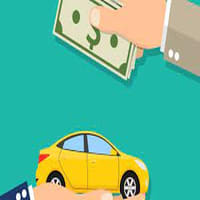The Economics of Auto Wrecking: How Salvage Yards Drive Revenue and Sustainability

The Hidden Economy of End-of-Life Vehicles
When a vehicle reaches the end of its useful life on the road, it enters a sophisticated economic ecosystem that few consumers fully understand. Auto wrecking and salvage operations represent a multi-billion dollar industry that balances profit motives with environmental responsibility. This article explores the business model behind auto wrecking and how modern salvage yards create value while contributing to sustainability goals.
The Auto Wrecking Value Chain: Multiple Revenue Streams
Modern auto wrecking businesses operate with a sophisticated understanding of how to extract maximum value from end-of-life vehicles. Their business model typically includes several distinct revenue streams:
1. Parts Resale: The Primary Profit Center
The most lucrative aspect of auto wrecking is the resale of salvaged parts. A single end-of-life vehicle can yield hundreds of reusable components with significant market value:
- Mechanical components: Engines, transmissions, alternators, and starters often retain 40-60% of their new value
- Body parts: Doors, hoods, bumpers, and panels are in high demand for collision repairs
- Electronic modules: Modern vehicles contain valuable computers and sensors
- Interior components: Seats, dashboards, and trim pieces for vehicles with discontinued parts
Industry data suggests that a typical end-of-life vehicle can generate $1,500-$2,500 in parts revenue, with luxury and specialty vehicles yielding significantly more. Companies like Cash for Car Melbourne and Angel Car Removal factor this potential parts value into their purchasing decisions.
2. Metal Recycling: The Volume Business
After valuable parts are removed, the vehicle's remaining shell still holds significant value in recyclable metals:
- Ferrous metals: The steel and iron components make up 65-70% of a vehicle's weight
- Non-ferrous metals: Aluminum, copper, and brass components command premium prices
- Precious metals: Catalytic converters contain platinum, palladium, and rhodium
A typical passenger vehicle yields approximately 0.8 tons of recyclable metal. With scrap steel prices averaging $200-300 per ton and non-ferrous metals commanding significantly higher rates, the metal value alone can justify the purchase of end-of-life vehicles.
3. Specialty Materials Recovery
Beyond common metals, modern auto wrecking operations extract value from specialized materials:
- Catalytic converters: These emission control devices contain precious metals worth $50-$250 each
- Lead-acid batteries: Recycled for lead and plastic content
- Tires: Processed for rubber reclamation or fuel
- Fluids: Engine oil, transmission fluid, and coolant can be recycled
These specialty materials create additional revenue streams that enhance the overall profitability of auto wrecking operations.
4. Vehicle Acquisition: The Front End of the Business
Cash for cars services like Car Removals and Cash for Used Cars represent the acquisition arm of the auto wrecking industry. These businesses:
- Purchase vehicles directly from consumers
- Offer free towing and removal services
- Handle paperwork and deregistration
- Provide immediate payment
The prices offered for vehicles are calculated based on the estimated recoverable value minus processing costs and profit margin. Sophisticated operations use data analytics to optimize their purchasing decisions, ensuring they pay competitive rates while maintaining profitability.
The Economics of Scale in Auto Wrecking
Like many industries, auto wrecking benefits significantly from economies of scale:
Operational Efficiencies
Larger operations achieve cost advantages through:
- Specialized equipment: Hydraulic crushers, shredders, and material handlers
- Inventory management systems: Software tracking thousands of parts
- Streamlined dismantling: Assembly-line processes for vehicle processing
- Transportation networks: Efficient logistics for parts distribution
Market Reach Advantages
Scale also provides marketing and sales benefits:
- Online marketplaces: Ability to list parts on multiple platforms
- Wholesale relationships: Direct supply to repair shops and body shops
- Export capabilities: Access to international markets for parts
- Brand recognition: Established reputation among consumers
These scale advantages have driven consolidation in the industry, with larger operations able to offer higher prices for end-of-life vehicles while maintaining profitability through operational efficiency.
The Environmental Economics of Auto Wrecking
Beyond direct revenue, auto wrecking creates significant environmental value:
Resource Conservation
The environmental benefits translate to economic value:
- Energy savings: Recycling metals requires 60-95% less energy than primary production
- Reduced mining impact: Less demand for virgin ore extraction
- Water conservation: Metal recycling uses significantly less water than primary production
- Emissions reduction: Lower carbon footprint for recycled materials
Regulatory Compliance as Business Opportunity
Environmental regulations have created new business opportunities:
- Proper fluid disposal: Specialized equipment and processes for handling hazardous materials
- Mercury and lead management: Safe removal of switches and batteries
- Refrigerant recovery: Capturing and recycling air conditioning gases
Forward-thinking auto wrecking businesses have transformed these regulatory requirements into competitive advantages, marketing their environmentally responsible practices to both consumers and business partners.
The Circular Economy Model in Action
Auto wrecking represents one of the oldest and most successful examples of circular economy principles in action:
Extended Product Lifecycles
By salvaging and reselling parts, auto wreckers extend the useful life of vehicle components far beyond the life of the original vehicle. This creates economic value while reducing environmental impact:
- A single engine or transmission might serve in multiple vehicles over decades
- Body panels can give new life to accident-damaged vehicles
- Electronic components can keep older vehicles operational
Closed-Loop Material Flows
The industry has developed sophisticated processes to ensure materials return to productive use:
- Steel from vehicles becomes raw material for new steel production
- Aluminum is recycled into new automotive components
- Plastics are increasingly being recovered for remanufacturing
- Fluids are refined and returned to the market
This closed-loop system creates economic opportunities at each stage of the process, from collection and processing to manufacturing and distribution.
Technology and Innovation in the Industry
The auto wrecking industry continues to evolve through technological innovation:
Inventory Management Systems
Modern salvage operations utilize sophisticated software to:
- Track thousands of parts across multiple locations
- Integrate with online marketplaces for real-time inventory updates
- Analyze sales data to optimize pricing and purchasing decisions
- Manage customer relationships and warranty claims
Advanced Dismantling Techniques
Technological improvements in dismantling include:
- Specialized tools for rapid, non-destructive parts removal
- Diagnostic equipment to verify component functionality
- Automated systems for fluid recovery and management
- Robotics for handling hazardous materials
Material Recovery Technologies
Innovations in material processing allow for:
- More efficient separation of different metal types
- Better recovery rates for precious metals from catalytic converters
- Advanced plastic sorting and recycling capabilities
- Improved techniques for handling and processing electronic waste
These technological advances continue to improve the economic viability of auto wrecking while enhancing its environmental benefits.
The Future Economics of Auto Wrecking
Several trends are shaping the future economic landscape of the auto wrecking industry:
Electric Vehicle Challenges and Opportunities
The rise of electric vehicles presents both challenges and opportunities:
- Battery recycling: High-value lithium, cobalt, and nickel recovery
- Fewer mechanical components: Reduced parts inventory but higher electronic content
- Specialized training requirements: Safe handling of high-voltage systems
- New material streams: Rare earth elements and specialized alloys
Forward-thinking auto wrecking businesses are already investing in the equipment and training needed to process electric vehicles profitably.
Regulatory Evolution
Changing regulations will continue to shape the industry:
- Extended producer responsibility laws shifting some costs to manufacturers
- Stricter environmental standards requiring additional processing steps
- Potential carbon credits for documented emissions reductions
- Increased reporting and tracking requirements
Market Consolidation
Economic pressures are likely to drive further consolidation:
- Larger operations leveraging technology investments across more locations
- Regional networks optimizing logistics and inventory management
- Integration with manufacturing supply chains for closed-loop material flows
- Specialized operations focusing on high-value niches
Conclusion: The Sustainable Business of Auto Wrecking
The auto wrecking industry demonstrates that environmental sustainability and economic profitability can be complementary rather than contradictory goals. By extracting maximum value from end-of-life vehicles through parts resale, metal recycling, and materials recovery, auto wrecking businesses create economic value while providing significant environmental benefits.
As the industry continues to evolve with changing vehicle technologies and regulatory requirements, it remains a compelling example of how circular economy principles can create sustainable business models. For consumers looking to dispose of end-of-life vehicles, understanding this economic ecosystem helps explain why services like We Cash For Cars can offer competitive prices while providing environmentally responsible disposal solutions.
If you have an end-of-life vehicle and want to ensure it enters this sustainable economic cycle, contact We Cash For Cars for a free, no-obligation quote. Our team understands how to maximize the value of your vehicle while ensuring it's processed in an environmentally responsible manner.
Related Articles

The Role of Technology in Modern Auto Wrecking Businesses
Discover how technology is transforming the auto wrecking industry, improving efficiency and environmental outcomes.

The Environmental Benefits of Auto Wrecking
Learn how auto wrecking and vehicle recycling contribute to environmental conservation and sustainability.

Scrap Car or Damaged Vehicle Removal in Melbourne
Get rid of your scrap car or damaged vehicle for a fair price in Melbourne. Our car removal team offers convenient, same-day service with instant cash payment.
